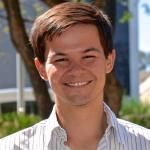Group B, Poster #164, Fault and Rupture Mechanics (FARM)
The effects of pre-stress assumptions on dynamic rupture with complex fault geometry in the San Gorgonio Pass, California, region
Poster Image:

Poster Presentation
2022 SCEC Annual Meeting, Poster #164, SCEC Contribution #12490 VIEW PDF
sume a constant magnitude of the shear and normal tractions on all fault surfaces but with rake varying from right lateral on the strike-slip segments to oblique thrust on the dip-slip segments, 2) a uniform regional stress (RS) field based on seismicity, and 3) an evolved stress (ES) field based on long-term quasi-dynamic modeling. We find that under the CT assumption, rupture through the pass is possible both from northwest to southeast and vice-versa. However, under the RS and CT assumptions, it is easier for rupture to propagate from the southeast (the Garnet Hill strand) to the northwest (the San Bernardino) strand than in the reverse direction. The results may have implications for seismic hazard in Southern California, as well as for our understanding of how fault geometry and stress pattern combine to determine the earthquake rupture path.
SHOW MORE
SHOW MORE






.jpg?OF5elAWpQSIowQvbwvvth3Yr6JSY5zsa&itok=sNRCSx8X)











































